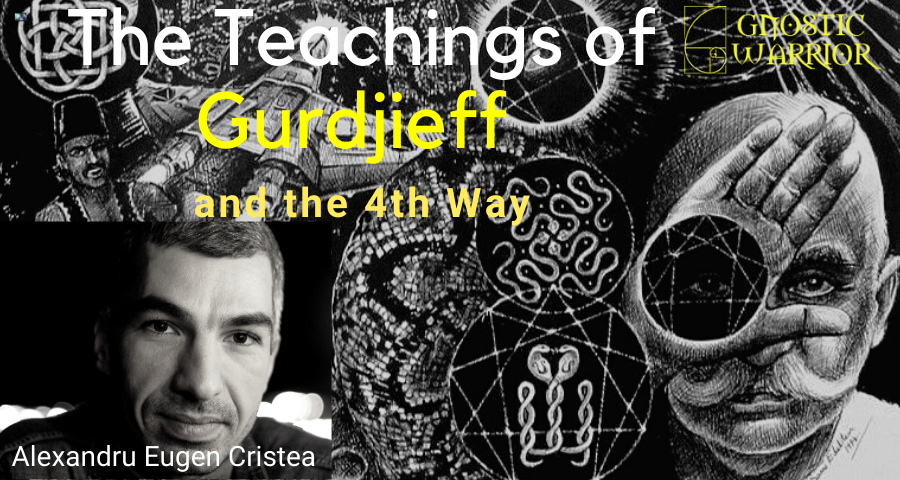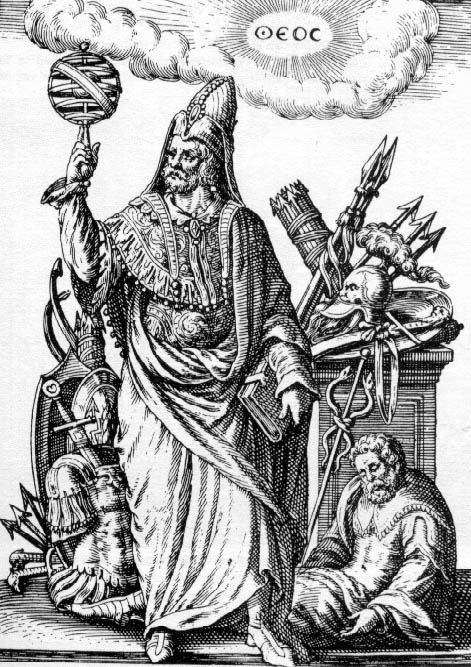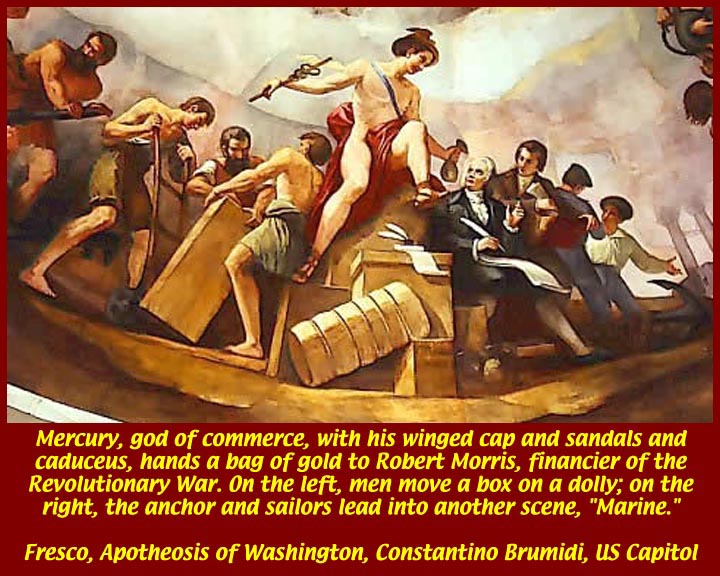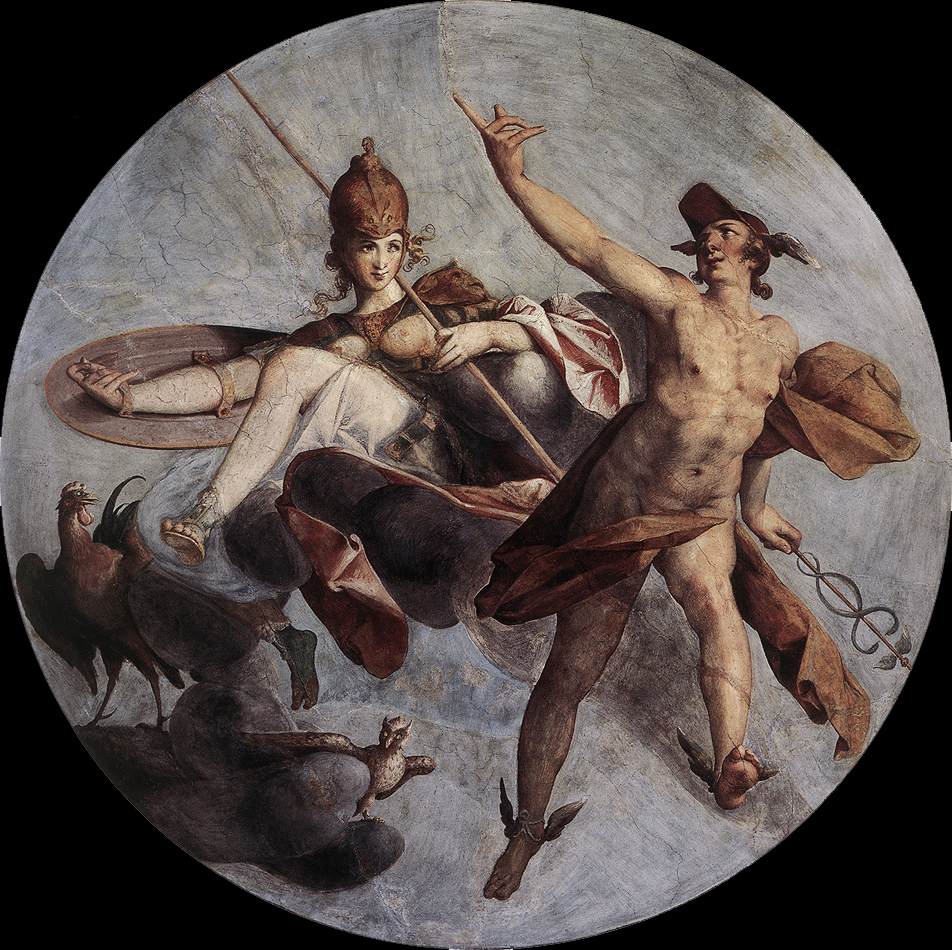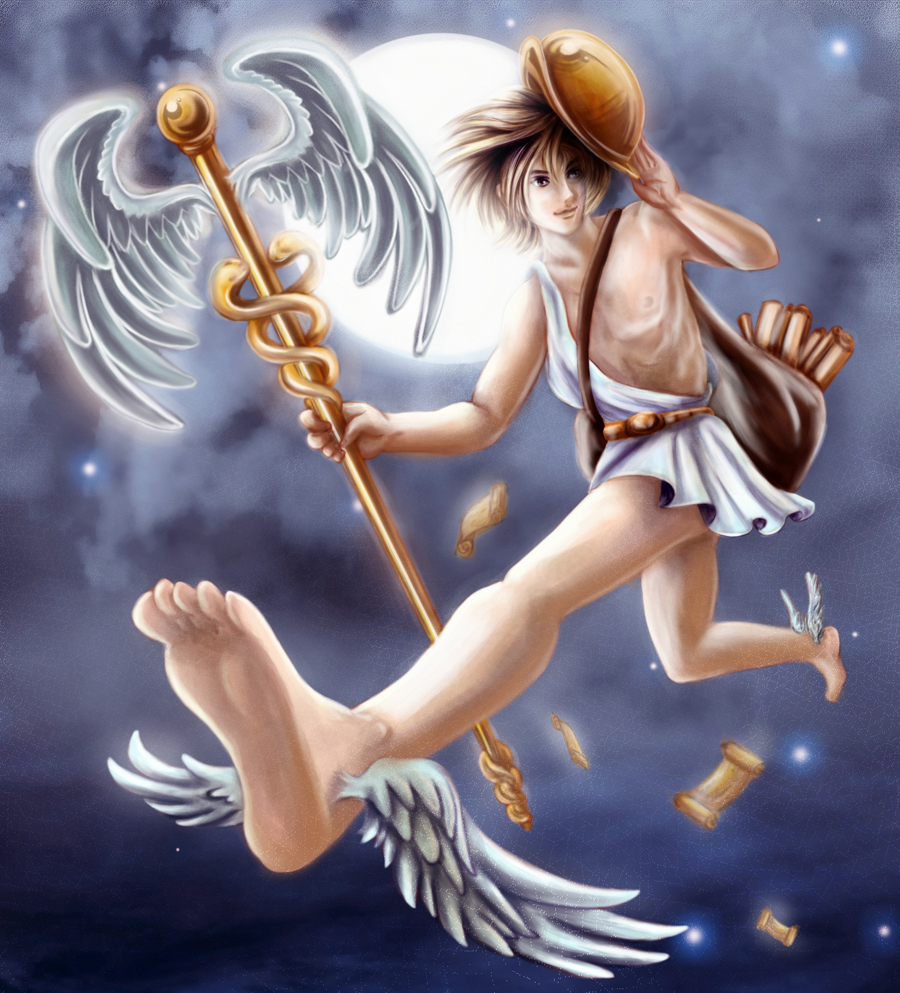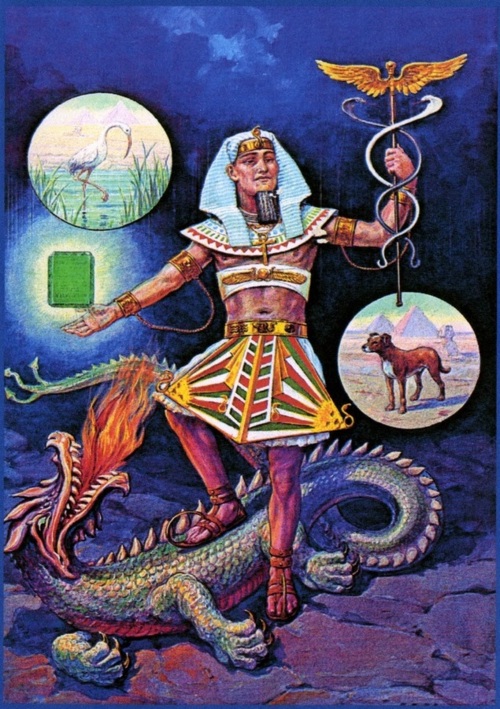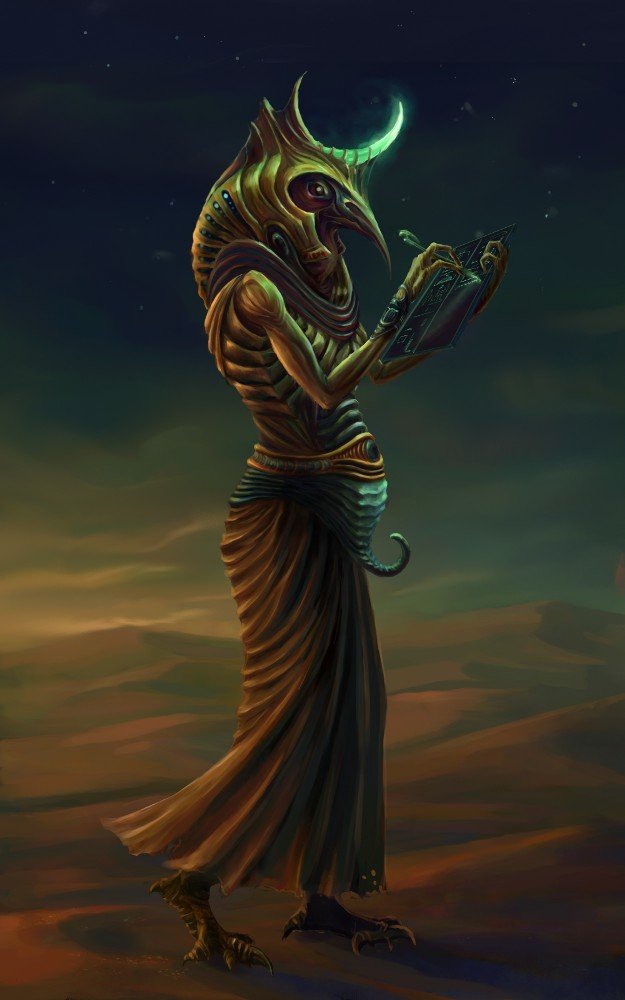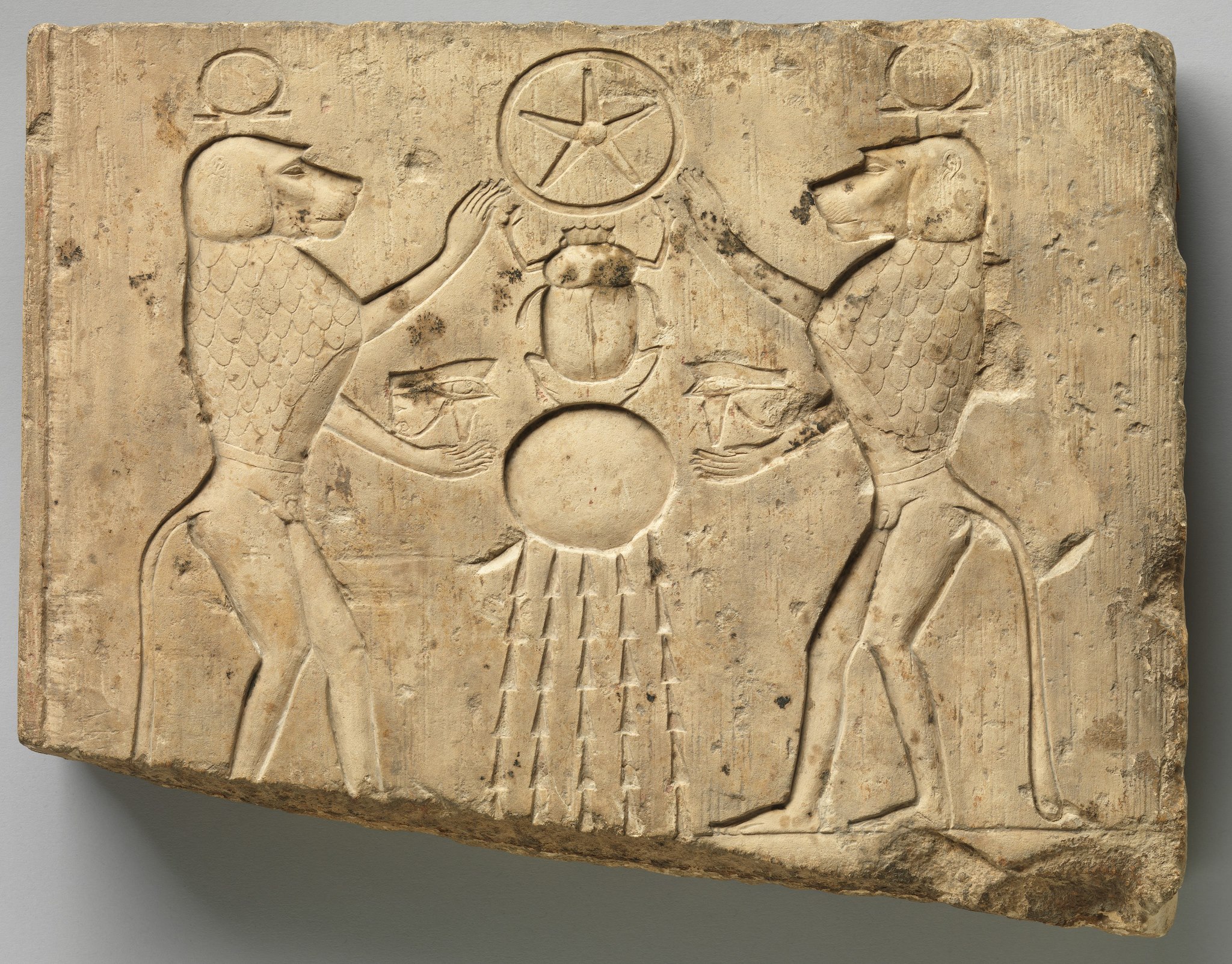p. 37
THUNDER rolled, lightning flashed, the veil of the Temple was rent from top to bottom. The venerable initiator, in his robes of blue and gold, slowly raised his jeweled wand and pointed with it into the darkness revealed by the tearing of the silken curtain: “Behold the Light of Egypt! ” The candidate, in his plain white robe, gazed into the utter blackness framed by the two great Lotus-headed columns between which the veil had hung. As he watched, a luminous haze distributed itself throughout the atmosphere until the air was a mass of shining particles. The face of the neophyte was illumined by the soft glow as he scanned the shimmering cloud for some tangible object. The initiator spoke again: “This Light which ye behold is the secret luminance of the Mysteries. Whence it comes none knoweth, save the ‘Master of the Light.’ Behold Him!” Suddenly, through the gleaming mist a figure appeared, surrounded by a flickering greenish sheen. The initiator lowered his wand and, bowing his head, placed one hand edgewise against his breast in humble salutation. The neophyte stepped back in awe, partly blinded by the glory of the revealed figure. Gaining courage, the youth gazed again at the Divine One. The Form before him was considerably larger than that of a mortal man. The body seemed partly transparent so that the heart and brain could be seen pulsating and radiant. As the candidate watched, the heart changed into an ibis, and the brain into a flashing emerald. In Its hand this mysterious Being bore a winged rod, entwined with serpents. The aged initiator, raising his wand, cried out in a loud voice: “All hail Thee, Thoth Hermes, Thrice Greatest; all hail Thee, Prince of Men; all hail Thee who standeth upon the head of Typhon!” At the same instant a lurid writhing dragon appeared–a hideous monster, part serpent, part crocodile, and part hog. From its mouth and nostrils poured sheets of flame and horrible sounds echoed through the vaulted chambers. Suddenly Hermes struck the advancing reptile with the serpent-wound staff and with snarling cry the dragon fell over upon its side, while the flames about it slowly died away. Hermes placed His foot upon the skull of the vanquished Typhon. The next instant, with a blaze of unbearable glory that sent the neophyte staggering backward against a pillar, the immortal Hermes, followed by streamers of greenish mist, passed through the chamber and faded into nothingness.
SUPPOSITIONS CONCERNING THE IDENTITY OF HERMES
Iamblichus averred that Hermes was the author of twenty thousand books; Manetho increased the number to more than thirty-six thousand (see James Gardner)–figures which make it evident that a solitary individual, even though he be overshadowed by divine prerogative, could scarcely have accomplished such a monumental labor. Among the arts and sciences which it is affirmed Hermes revealed to mankind were medicine, chemistry, law, arc, astrology, music, rhetoric, Magic, philosophy, geography, mathematics (especially geometry), anatomy, and oratory. Orpheus was similarly acclaimed by the Greeks.
In his Biographia Antiqua, Francis Barrett says of Hermes: “* * * if God ever appeared in man, he appeared in him, as is evident both from his books and his Pymander; in which works he has communicated the sum of the Abyss, and the divine knowledge to all posterity; by which he has demonstrated himself to have been not only an inspired divine, but also a deep philosopher, obtaining his wisdom from God and heavenly things, and not from man.”
His transcendent learning caused Hermes to be identified with many of the early sages and prophets. In his Ancient Mythology, Bryant writes: “I have mentioned that Cadmus was the same as the Egyptian Thoth; and it is manifest from his being Hermes, and from the invention of letters being attributed to him. ” (In the chapter on the theory of Pythagorean Mathematics will be found the table of the original Cadmean letters.) Investigators believe that it was Hermes who was known to the Jews as “Enoch,” called by Kenealy the “Second Messenger of God.” Hermes was accepted into the mythology of the Greeks, later becoming the Mercury of the Latins. He was revered through the form of the planet Mercury because this body is nearest to the sun: Hermes of all creatures was nearest to God, and became known as the Messenger of the Gods.

Moe is the founder of GnosticWarrior.com. He is a father, husband, author, martial arts black belt, and an expert in Gnosticism, the occult, and esotericism.

